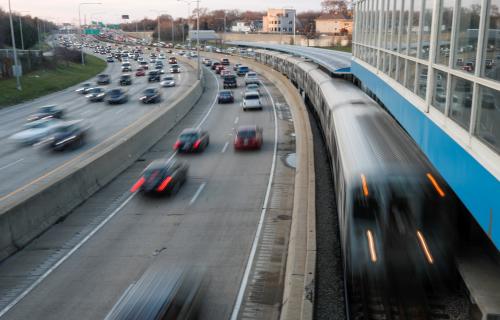

10:00 am EDT - 11:30 am EDT
Past Event
10:00 am - 11:30 am EDT
1775 Massachusetts Avenue N.W.
Washington, DC
20036
According to UNICEF, 70 percent of people around the world will live in cities by the year 2050. As cities grow in density, they will increasingly suffer from vehicular congestion, poor urban planning, and insufficient highway designs—all of which contribute to accidents, unnecessary time and money spent commuting, and lost productivity and economic growth. However, recent advancements in technology could offset these consequences and change the way we travel. With ubiquitous connectivity, 5G networks, dynamic traffic signals, remote sensors, and autonomous vehicles, it is possible to increase automotive safety, efficiency, and operations.
On March 23, the Center for Technology Innovation at Brookings held a forum on smart transportation and discuss a white paper on “Smart Transportation in China and the United States.” How many lives could be saved through the use of autonomous vehicles? How many billions of dollars of GDP generated? Experts examined which technological developments have the potential to turn current systems into smart transportation networks, with an emphasis on China and the United States. They also discussed the ways in which public opinion and policy frameworks differ between these countries and what unique challenges are faced in deploying smart transportation networks.
After the session, panelists took questions from the audience. The event was webcast live.
Related Content

Yuming Ge, Xiaoman Liu, Libo Tang, Darrell M. West
December 14, 2017


Adie Tomer, Ben Swedberg
May 10, 2024

Nicol Turner Lee
August 6, 2024

Nicol Turner Lee, John Villasenor, Mark Brennan
May 6, 2024